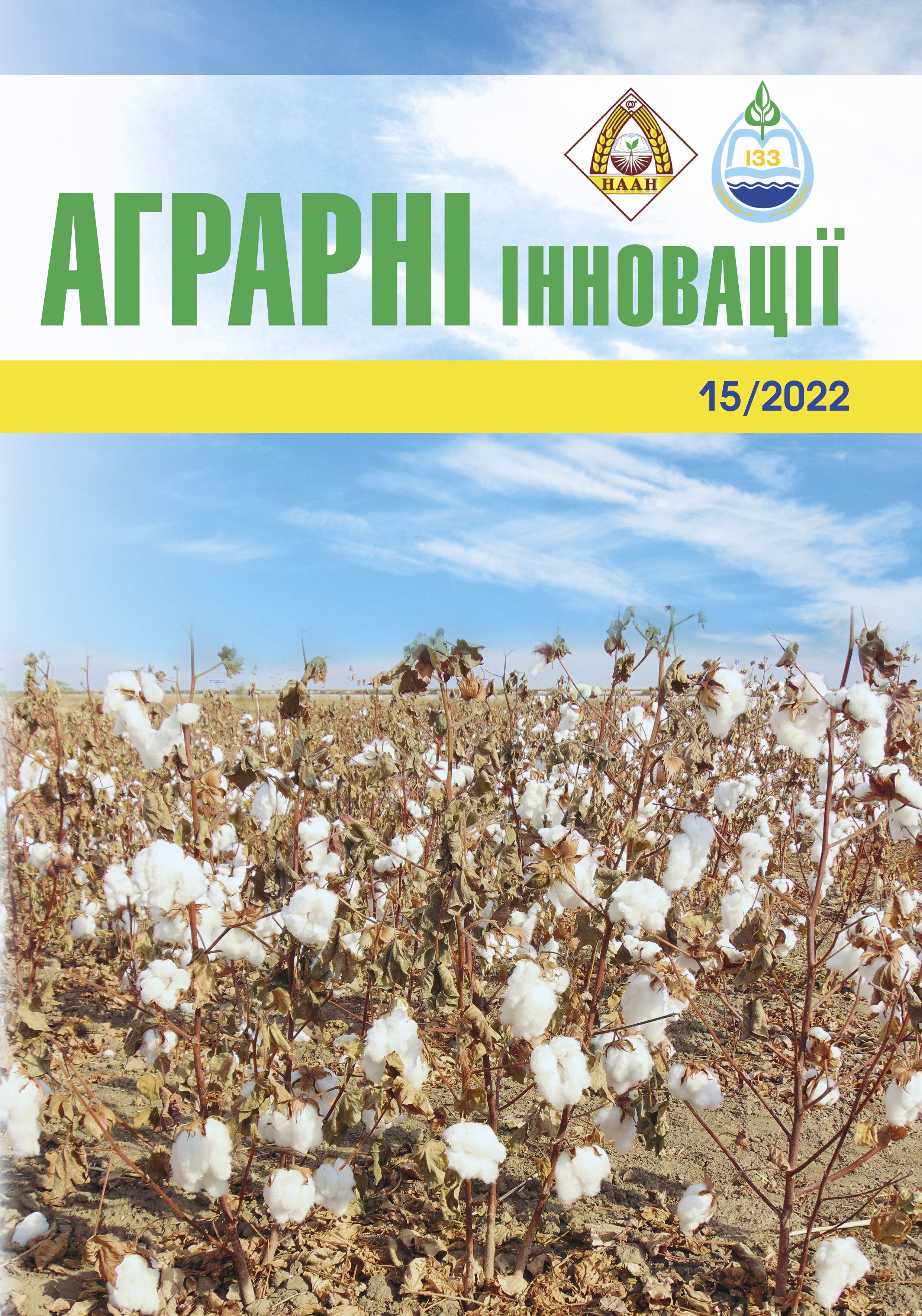The efficiency of growing high-yielding corn hybrids with increased adaptive potential to adverse environmental conditions
Abstract
Purpose. To improve the elements of the technology of growing modern drought-resistant, disease- resistant and pest-resistant, high-seeded corn hybrids and to investigate their reaction to adverse environmental conditions in Ukraine. Methods. The research was carried out at the reference point of the Institute of Plant Physiology and Genetics of the National Academy of Sciences of Ukraine – the Blagovishchensk branch of the State Enterprise «Center for Certification and Examination of Seeds and Planting Material», which is located in the southern part of the Right Bank Forest Steppe and the Northern Steppe of Ukraine. The planning and implementation of research was carried out in accordance with generally accepted methods of conducting field experiments, methods of State variety testing of agricultural crops. Results. New corn lines resistant to blistering slag were selected: Uk 976/126, Uk 912/17, Uk 937-2/132, Uk 187/12-73, Uk 796/126, Uk 849/29-132. Inbred lines were obtained for the trait «long head»: Chk 6128, Dk 16/17, Dk 8A3, Uk 813/73, Chk 55, Dk 27, A 155/4MV, Uk 132zs. They are recommended for crossing with other parental forms in order to obtain heterozygous hybrids. Highly productive lines with a multi-row cob were selected: Uk 126, Chk 454/47r, Chk 1879/128, Chk 1769/29, Chk 128, Chk 1745/73-2. The lines of this group represent an extremely promising direction in the selection of highyielding heterosis hybrids of corn. The following lines were selected for «high drought resistance»: Uk 950, Chk 637, Uk 1379/14, Uk 442A/17. The isolated inbred lines should be used in breeding programs of crossings with the aim of obtaining heterosis drought-resistant corn hybrids. The indisputable superiority of the new Cherkaskyi 227MV corn hybrid compared to the Pereyaslavskyi 230SV hybrid has been established. In particular, its greater drought and heat resistance, higher productivity, as well as faster moisture loss, which is a progressive direction in breeding. It is important to expand its cultivation in a significant part of arid and non-guaranteed corn production conditions, especially in conditions of drought and military operations. Findings. It was established that when creating new high-yielding hybrids of corn, it is necessary to select the source material taking into account the adaptive capacity of genotypes that better adapt to environmental changes. The use of modern hybrids that have genetically determined: high yield potential, resistance to temperature and water stress, against damage by diseases and damage by phytophages, even under stressful conditions ensures high yields of corn.
References
2. Бойко П. І. Кукурудза в інтенсивних сівозмінах : монографія. Київ : Урожай, 1990. 142 с.
3. Коваленко Н. П. Становлення та розвиток науково-організаційних основ застосування вітчизняних сівозмін у системах землеробства (друга половина ХІХ – початок ХХІ ст.) : монографія. Київ : ТОВ «Нілан-ЛТД», 2014. 490 с.
4. Демиденко О. В., Бойко П. І., Блащук М. І., Шаповал І. С., Коваленко Н. П. Сівозміни та родючість чорнозему Лівобережного Лісостепу : монографія. Сміла : Чорнобаївське КПП, 2019. 484 с.
5. Чучмий И. П., Моргун В. В. Генетические основы и методы селекции скороспелых гибридов кукурузы. Киев : Наукова думка, 1990. 284 с.
6. Гаврилюк В. М., Загинайло М. І., Лівандовський А. А., Таганцова М. М. Динаміка сортового районування гібридів кукурудзи. Насінництво. 2016. № 1–3. С. 8–11.
7. Моргун В. В., Гаврилюк М. М. Клуб 100 центнерів. Сучасні сорти й гібриди та системи живлення і захисту рослин. Київ : Логос, 2018. 112 с.
8. Гаврилюк В. М., Загинайло М. І., Лівандовський А. А., Таганцова М. М. Динаміка сортового районування гібридів кукурудзи. Насінництво. 2016. № 1–3. С. 8–11.
9. Гаврилюк В. М., Блащук М. І., Семерунь Т. Б. Який гібрид вибрати. Пропозиція. 2018. № 2. С. 72–73.
10. Черчель В. Характеристики гібридів. Вибір оптимального типу. Агрономія сьогодні: кукурудза. 2019. С. 38–43.
11. Лавриненко Ю. О., Коковіхін С. В., Писаренко П. В. Кукурудза на зрошувальних землях півдня України: монографія. Херсон : Айлант, 2009. 428 с.
12. Філіпов Г. Л. Аспекти підвищення адаптивної стійкості кукурудзи в Степу. Хранение и переработка зерна. 2010. № 10. С. 21–23.
13. Вожегова Р. А., Влащук А. М., Дробіт О. С., Шебанін В. С., Дробітько А. В. Удосконалення елементів технології виробництва насіння високих репродукцій зернових культур на зрошуваних землях. Аграрні інновації. 2020. № 1. С. 84–90. https://doi.org/10.32848/agrar.innov.2020.1.14.
14. Ткачик С. О. Методика проведення експертизи сортів рослин групи зернових, круп’яних та зернобобових на придатність до поширення в Україні. Вінниця : Нілан-ЛТД. 2016. 82 с.
15. Ткачик С. О. Методика проведення експертизи сортів рослин групи зернових на відмінність, однорідність і стабільність. Вінниця : Нілан-ЛТД. 2016. 164 с.
16. Вихватнюк С. І., Годованюк М. Є., Гаврилюк В. М. Насіння кукурудзи: в умовах фермерського господарства. Насінництво. 2012. №9. С. 15–16.
17. Керечки Б., Зарич Л., Лазич-Янчич В. Некоторые физиологические показатели устойчивости кукурузы к засухе и высоким температурам. Кукуруза и сорго. 1994. № 4. С. 21–23.






